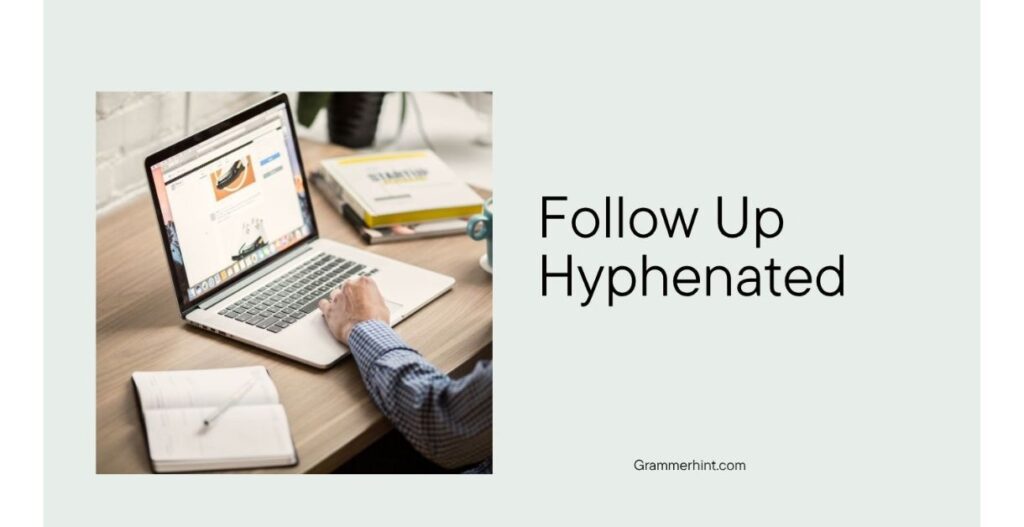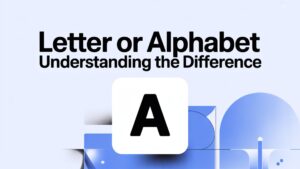In professional writing and everyday communication, few expressions are as commonly used and as frequently misused as “follow up” and “follow-up.
“ Understanding the difference between them is essential for maintaining grammatical correctness, especially in business emails, medical settings, sales strategies, and more.
This comprehensive guide will explore the distinctions between Follow up (verb form) and Follow-up (noun/adjective form), highlight common grammar mistakes, and provide plenty of scenario examples to ensure you’re always using the right form in any professional context.
The Confusion: Is Follow Up One Word or Two?
One of the most common questions writers have is: “Is follow up one word or two?” The answer depends entirely on how you’re using it in a sentence.
To break it down:
- Follow up (two words) is a verb.
- Follow-up (hyphenated) is a noun or adjective.
- Followup (one word, no hyphen) is non-standard and should be avoided in professional writing.
So if you’re asking, “Is follow up one word or two?” the correct form is either two words (as a verb) or hyphenated (as a noun/adjective).
Understanding the Forms
1. Follow up (Verb Form)
This is used when describing an action something you or someone else will do.
Examples:
- I will follow up with the client tomorrow.
- She needs to follow up after the meeting.
Grammatical role: Main verb or part of a verb phrase (often paired with auxiliary verbs like will, should, or must).
Email Example:
Subject: Re: Application Submission
Hi Sarah,
Just wanted to follow up on the marketing application I submitted last week. Let me know if you need anything else.
2. Follow-up (Noun/Adjective Form)
This refers to a thing a meeting, email, appointment, or action that takes place after an initial interaction.
Examples:
- Let’s schedule a follow-up.
- We sent a follow-up email to clarify our proposal.
Grammatical role: Functions as a noun or a compound adjective.
Email Example:
Subject: Follow-Up on Our Sales Meeting
Hi James,
Thanks for your time earlier. Attached is the follow-up report as discussed.
3. Followup (Non-standard Form)
Avoid using followup without a hyphen or space. It is not accepted in formal writing and may appear careless.
When is Follow Up Hyphenated?

The hyphen is used when “follow-up” is a noun or an adjective. This is a classic case of hyphenated compound words in English.
Rule of Thumb:
- If it’s an action → no hyphen (follow up)
- If it’s a thing or description → use a hyphen (follow-up)
Grammar Tip:
Always consider the grammatical role of the word in the sentence. This helps avoid common grammar mistakes and improves professional email etiquette.
Digging Deeper: Etymology and Language Evolution
Etymology:
The term “follow up” traces back to Old English, with “folgian” (to follow) and “uppe” (up). It evolved through the 18th century and became a staple in business language by 1905.
Language Evolution:
As English developed, so did the need for clearer compound modifiers. This led to the creation of the hyphenated form, making writing more precise.
Verb vs Noun: A Closer Look
| Usage | Form | Example Sentence |
|---|---|---|
| Verb | Follow up | I will follow up with the vendor. |
| Noun | Follow-up | Let’s schedule a follow-up. |
| Adjective | Follow-up | The follow-up appointment is next week. |
This table makes it easy to distinguish how the spelling and grammar change depending on verb-noun differentiation.
Real-World Examples: Business & Professional Contexts
1. Client Communication
- Client follow-up email ensures clarity after meetings.
- Example: “Hi John, here’s the follow-up from yesterday’s session.”
2. Project Management
- Important to follow up on assigned tasks.
- Example: “Please follow up with the development team about the pending report.”
3. Medical Follow-Up
- In healthcare, a medical follow-up is scheduled after treatment.
- Example: “Your follow-up appointment is on Friday.”
4. Sales Process
- A sales follow-up technique improves engagement.
- Example: “Effective follow-up communication can boost conversion rates.”
Synonyms and Related Expressions
Here are common alternatives and follow-up strategies:
- Pursue the matter further
- Check up on the issue
- Investigate the request
- Monitor the project
- Continue the conversation
- Revisit the topic
- Review feedback
- Follow through on the decision
- Ensure completion
- Take further action
Using Follow-Up in Context
Email Sample 1: Sales
Subject: Follow-Up on Our Product Demo
Hi Alex,
It was great speaking with you. As a follow-up, I’m sending over a recap and next steps for implementation.
Email Sample 2: Job Interview
Subject: Following Up on Interview for Design Role
Dear Anna,
I’m writing to follow up on my interview last week. I appreciated our conversation and would love to hear any feedback.
Meeting Request Example
Can we have a follow-up meeting next Monday to discuss the strategy further?
Medical Setting
The medical follow-up will determine the success of your treatment.
Compound Words, Modifiers, and Grammar Rules
Understanding compound nouns, compound adjectives, and compound modifiers is key when writing professionally.
- Compound noun: “Follow-up” as a standalone thing (e.g., a follow-up).
- Compound adjective: “Follow-up” describing another noun (e.g., follow-up session).
- Modifiers: Adjectives like “follow-up” modify nouns to add clarity.
Follow English grammar rules and proofread for hyphenation to avoid errors.
Commonly Confused Words
Other examples of confusion like “follow up” include:
- Check-in vs check in
- Set up vs setup
- Log in vs login
Following proper English language usage tips helps clarify your writing.
Proofreading Tips: Avoid Hyphenation Mistakes
To keep your writing polished:
- Double-check the grammatical role
- Use tools to verify hyphen vs space usage
- Read aloud to catch awkward phrasing
- Keep a reference list of hyphenated compound words
Final Thoughts: Follow-Up Done Right
The choice between follow up, follow-up, and followup comes down to understanding their grammatical correctness, purpose, and usage.
Remember:
- Use follow up as a verb.
- Use follow-up as a noun or adjective.
- Avoid followup in formal or business settings.
In any professional communication whether it’s a report, email, meeting recap, or client communication knowing the difference elevates your credibility.
So the next time you’re crafting a message or writing a report, pause and ask: Is this an action I’m taking, or a thing I’m referencing? That small step will lead to better clarity, stronger engagement, and more effective business communication.









